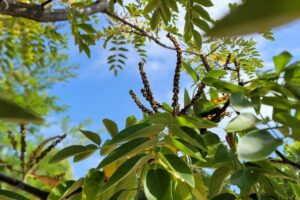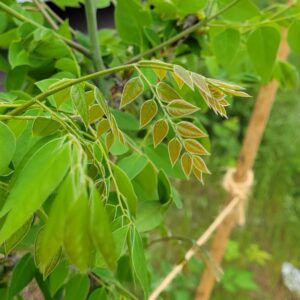A Leaflet on Leaflets
If you’ve ever gone on a tree walk with Eugene Director Erik Burke, you’ve heard about some of the nuanced differences among trees that you can study to identify them. One iconic characteristic is always a good starting point: the leaf. Summer is a great time to investigate the myriad shapes that leaves take.

But what exactly comprises a single leaf? A tricky aspect of plant morphology is understanding simple leaves versus compound leaves. A simple leaf is a singular leaf connected by its stem, or petiole, to the branch (like the Oregon white Oak pictured above).
Sometimes what you might think is an entire leaf is actually a leaflet on a compound leaf. Leaflets will all be attached to the main petiole, which is connected to the branch. How can you tell the difference? Look for the bud node, which will appear where the stem connects to the branch, but not where a leaflet connects to the stem.

Some compound-leaved trees include golden rain tree, red horsechestnut, yellowwood, Amur maackia (pictured above), and Kentucky coffee tree (pictured below). The Kentucky coffee tree has double compound leaves. That means that their leaflets have leaflets. Their leaflet branches can have 40 leaflets!

Some other common trees that folks may know that have compound leaves include ashes, buckeyes, locusts, walnuts, and the infamous tree of heaven. Becca and Erik in the Eugene office sometimes compete at events for who can find the tree of heaven leaf with the most leaflets. Becca currently has the record with 49.
One of the best times to get up close and personal with a tree’s leaves is when you’re pruning. Our Eugene-Springfield team is hosting community printing events August through October. Details here.
